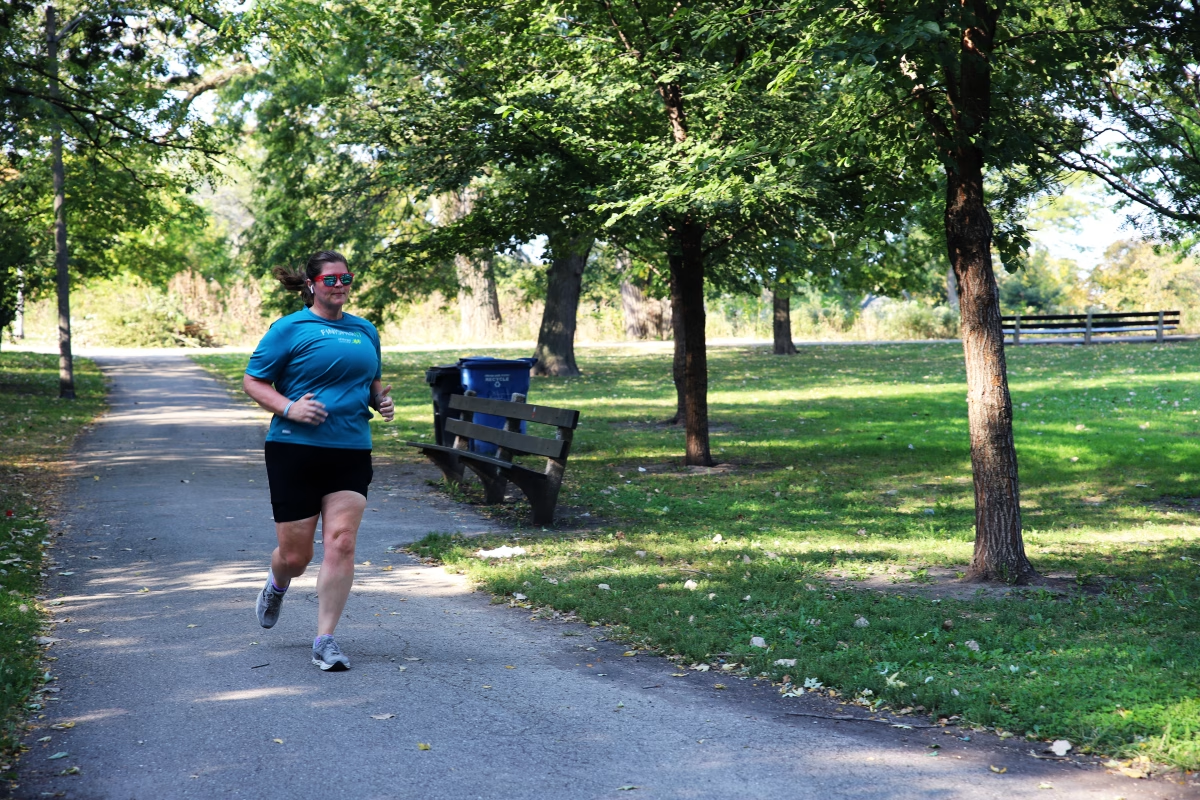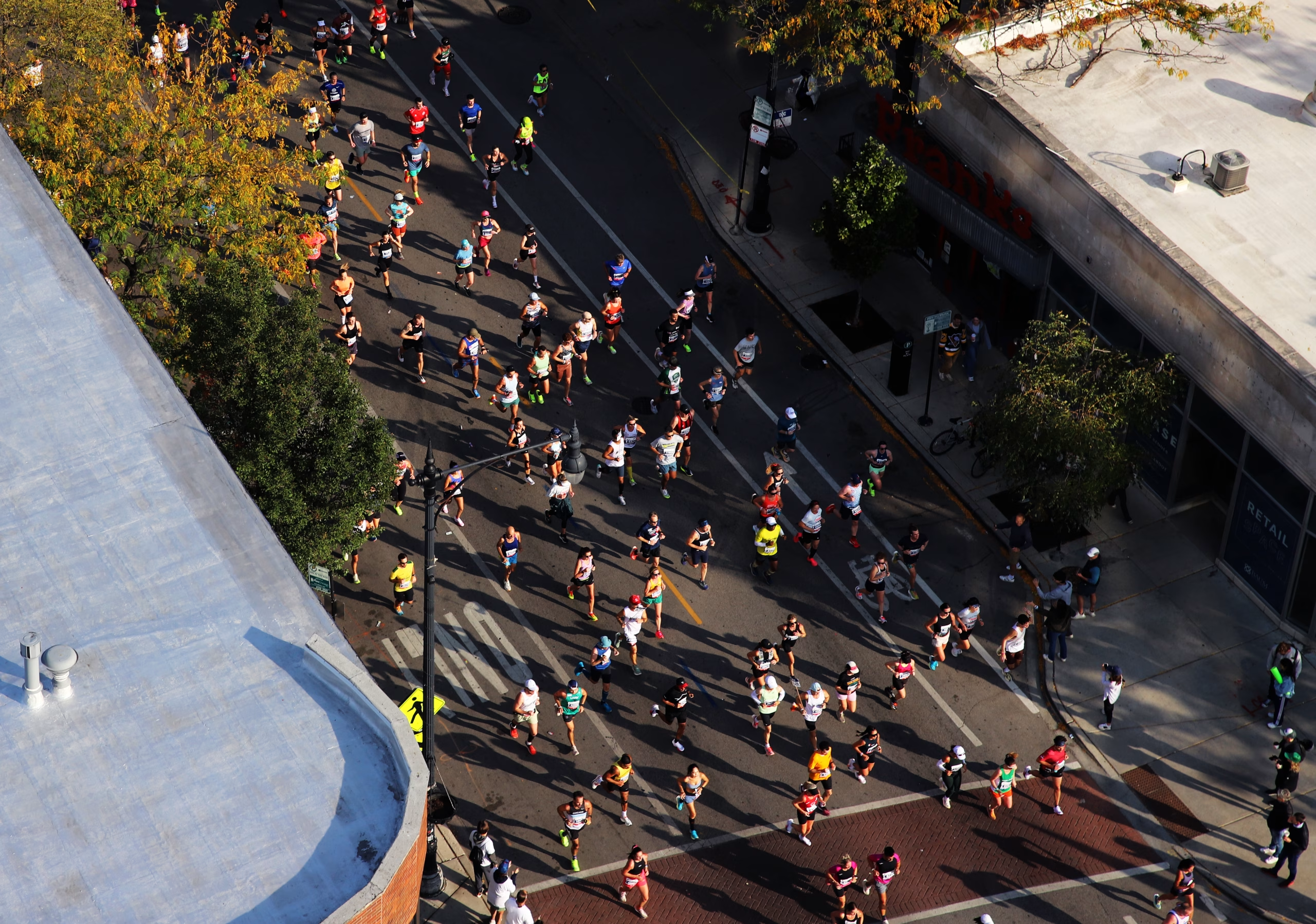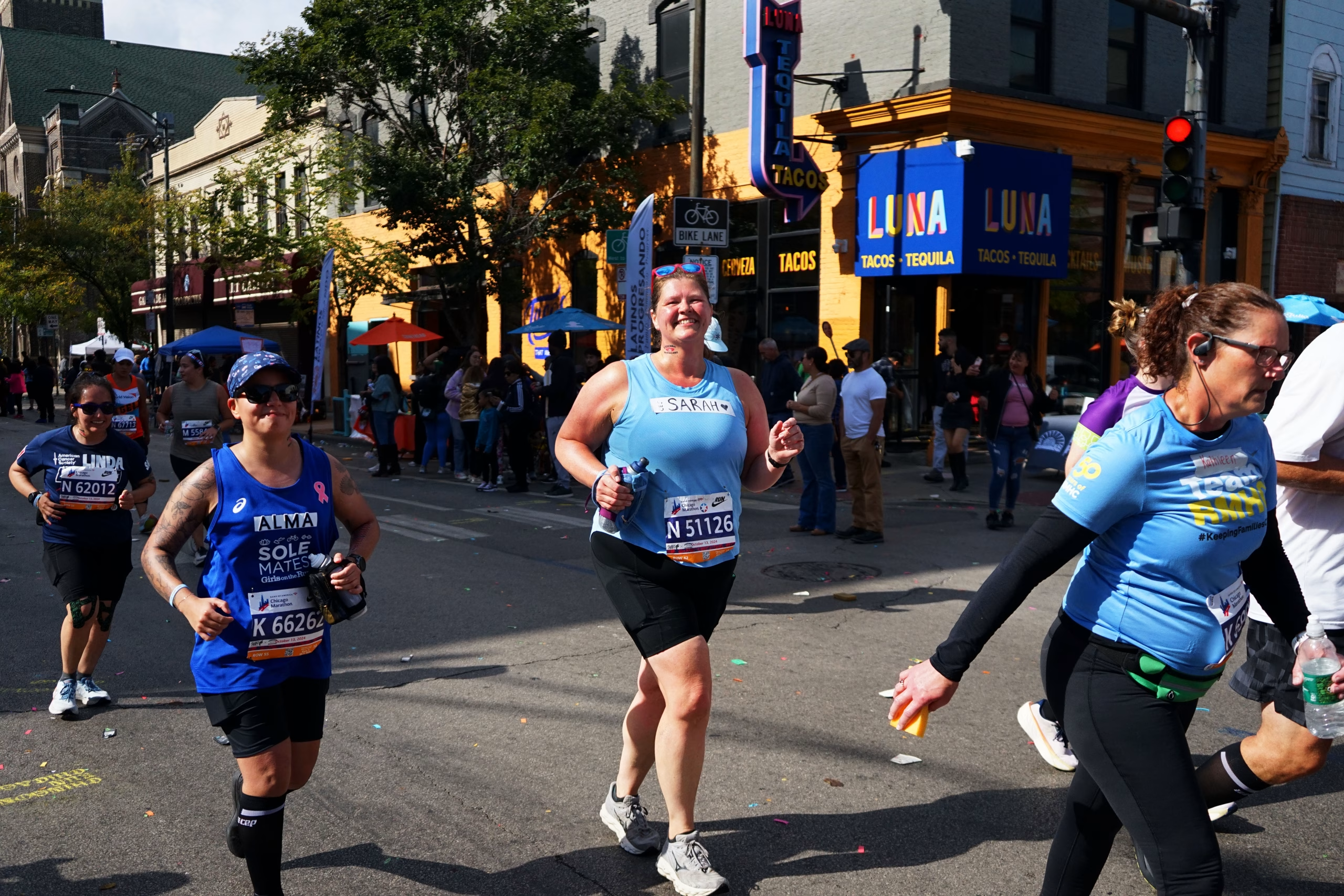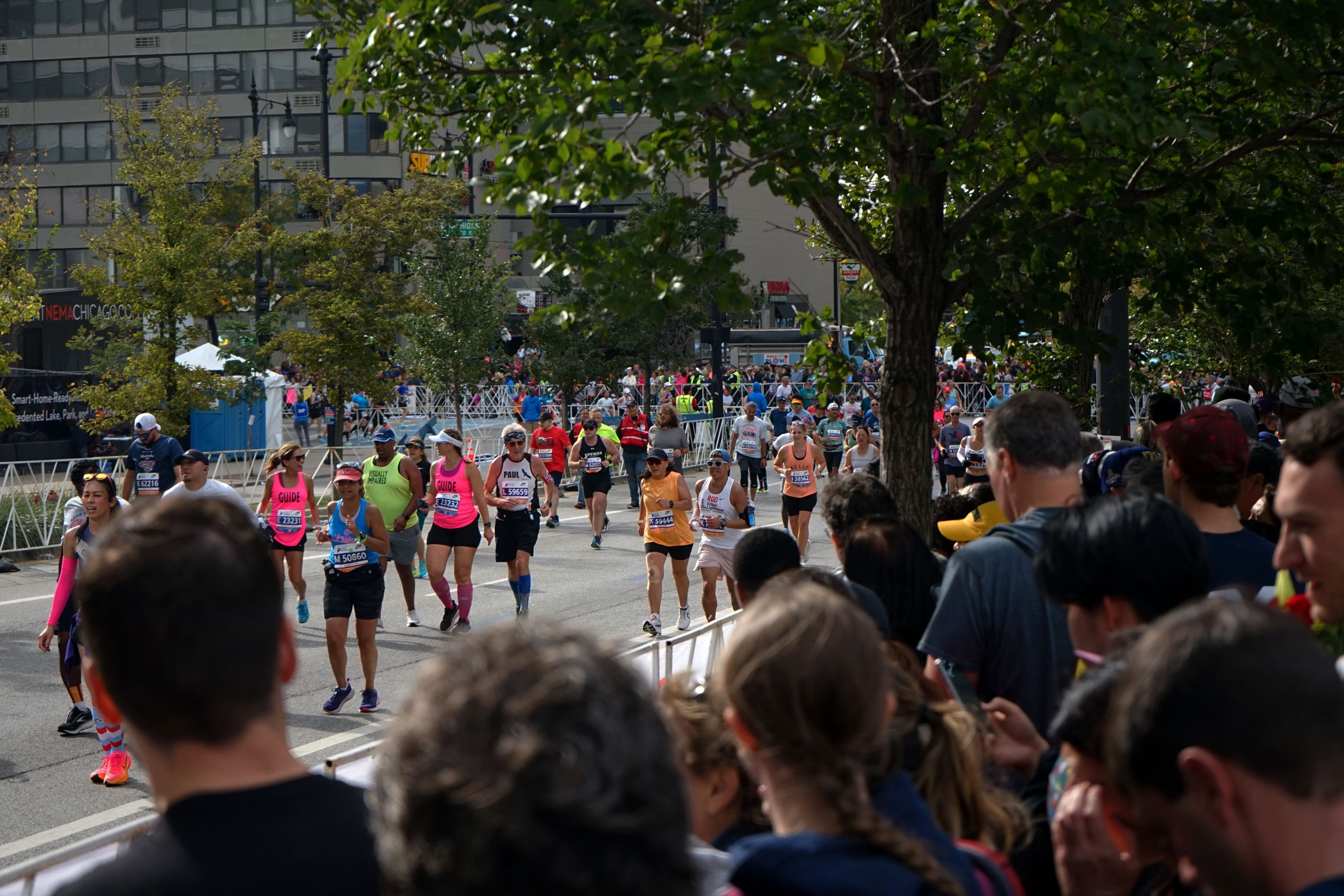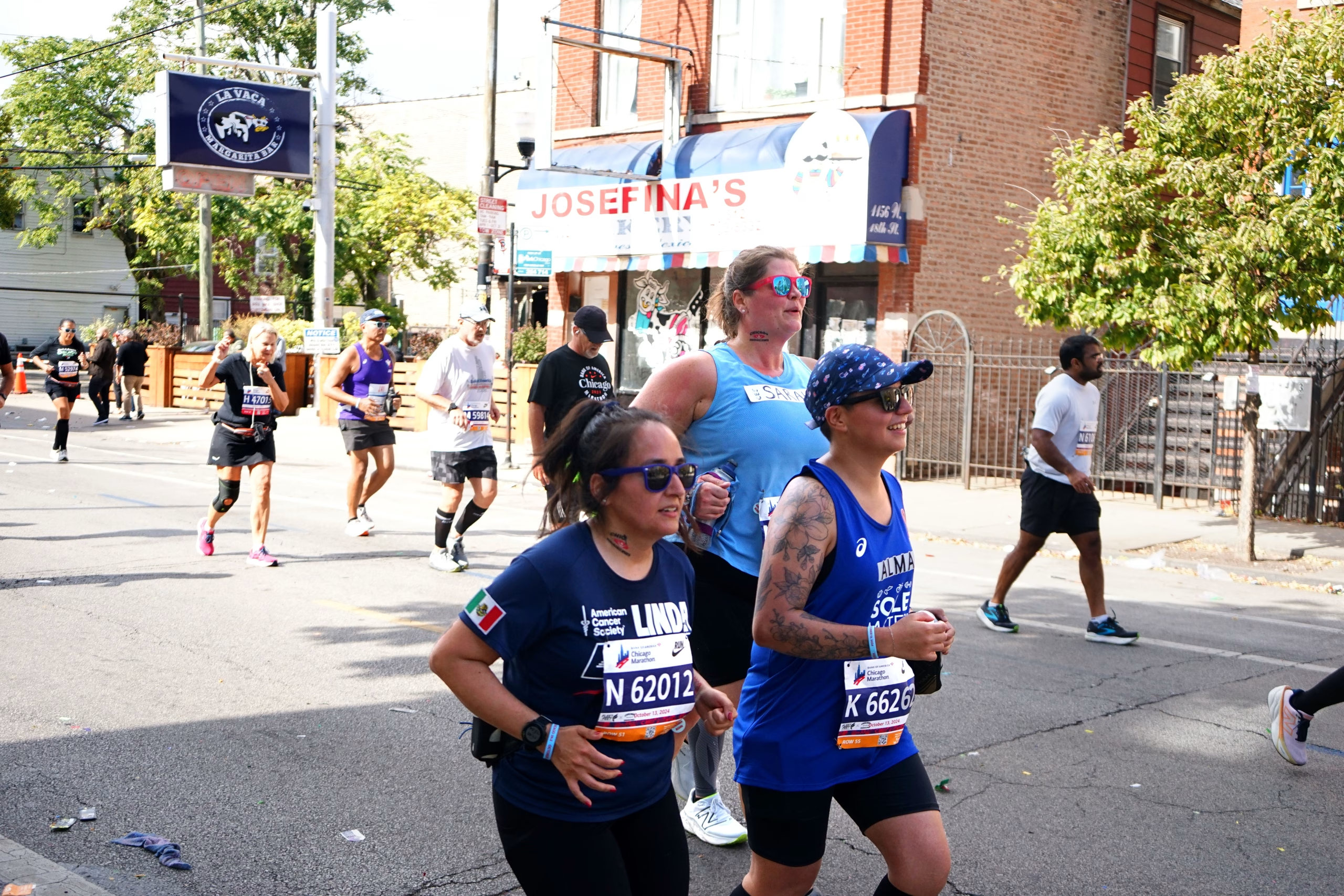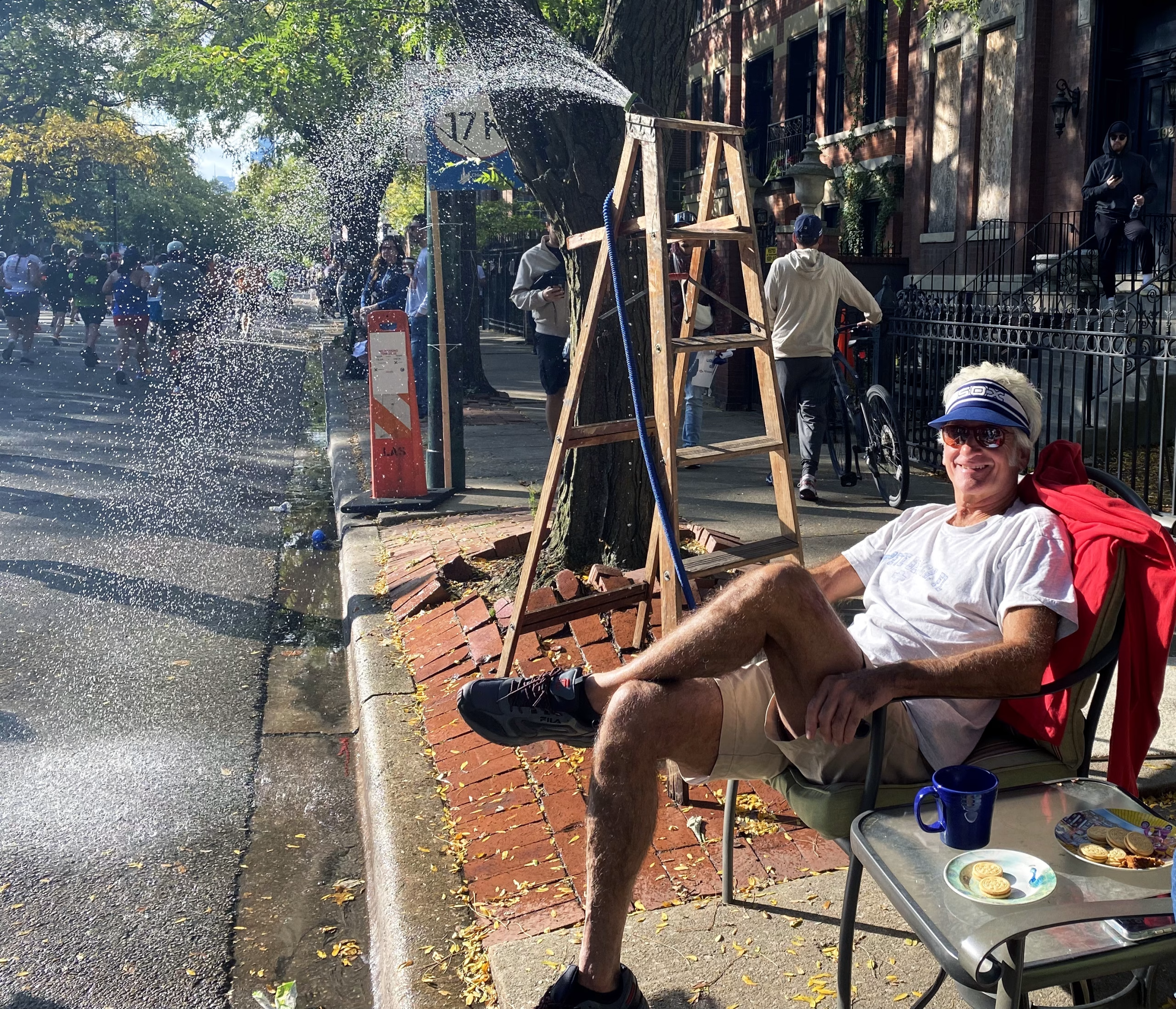The Chicago Marathon kicked off Sunday morning in Grant Park for its 46th year. Since its first race in 1977, more than one million runners have crossed the finish line, including a record 52,150 runners this year.
The race was also the site of a women’s marathon world record. Ruth Chepngetich of Kenya finished the race in just 2:09:56, beating the previous record by almost two minutes. Catherine Debrunner of Switzerland beat her own course record in the women’s wheelchair race with a time of 1:36:12.
People from different states and countries traveled to run the marathon, and CBS reported that “more than a million” supporters lined the course.
The crowds at the Chicago Marathon are dynamic, including cheer zones and DJ stands throughout the course.
“There’s something so wholesome about it,” attendee Megan Dedelow, who just stopped by to take in the environment, said. “Just being here and watching everyone support strangers running, doing something they love or for a good cause is great.”
Along with family spread throughout the course, runner Shannon Cochran had four friends waiting for her in Lakeview East, shortly after the mile nine marker.
No one in the group is originally from Chicago and have been friends for a year.
“We met on an app … we joined a group called ‘30 flirty and thriving,’” Ellen Chamberlain, a member of Cochran’s support group, said. “We just decided to meet up one day … and we’ve been friends ever since.”
The group cheered as Cochran ran past them with a smile and a wave and was gone within seconds.
The group laughed after the interaction and friend Katie Phillips exclaimed, “Well, that’s that!” The group spent hours waiting so they could support her for a single moment.
The group held cardboard cut-outs of Cochran and her cat, Tootie, along with a sign that said “Want us to call you an Uber?”
Signs are a popular way for supporters to engage with the marathon. Often, there are not only encouraging signs along the course, but also many satirical to get a laugh out of runners. Signs included statements kidding with runners that read “Have you tried therapy?” and “I also love attention.”
Many signs are featured on social media from people showing them off on personal accounts and news outlets, such as CBS, featuring their favorites.
Supporters like Chicago resident Michelle Ruberg, who had been out since 8:30 that morning, had her sign in hand and planned to cheer all day.
“I had two friends in it, but I just stayed out here,” Ruberg said. “I think I probably will (stay all day). I’ll feel good if I can maybe help somebody make it to the end.”
Ruberg knows first-hand that running takes an intense sense of self-determination and believes support is a crucial way to encourage athletes.
“I used to do track and cross-country and it can help a lot I feel like,” Ruberg said. “Like the dead spot where there’s no one and then somebody you know pops out and it’s like, ‘oh gosh, thank you.’”
Lincoln Park resident Jim Colaianni ran the marathon in 1979, but now spectates and supports the runners who go past his house “every year, rain or shine,” with a makeshift sprinkler for the course.
“All it is is the step ladder and a seat clamp and a hose,” Colaianni, who first set up his sprinkler 20 years ago, said. “We stick it right in front of the house … and away we go. And I’ve been doing it every year, every year since.”
As competitors ran through the street, many veering into the path of Colaianni’s sprinkler, spectators cheered, waving signs and rallying for friends and strangers alike.
Among these crowds lining the course were Josephine and Jerry Conlan, there to support their granddaughter Bridget Wall, a middle school teacher in Cambridge, Massachusetts.
“Bridget grew up in the Chicago area,” Josephine Conlan said. “She currently teaches in Boston and came home to run in Chicago. She’s also done the Boston Marathon. … We’re so excited.”
Even though Conlan has lived in the city her whole life and attended DePaul University, this was the first time she’d seen the marathon in Chicago.
“We’ve got the app so we know, and I just talked to (Bridget’s) father,” Conlan said. “They were at a couple of different spots, and they’re coming this way.”
Conlan also said that when she and Jerry were lost trying to get to their next destination, a stranger, Patrick McGarrity, came up and helped them find where they were going — then he stuck with them for the rest of the day. McGarrity paid for their Uber, planned out timing and helped them get to each race spot so they could cheer for Bridget as much as possible.
For many, the community and camaraderie were instrumental to the marathon’s success.
“Oh my god, it’s so wonderful,” Conlan said. “People are too good.”
Related Stories:
- Marathoners take on the Windy City
- Demons on the Run: DePaul students start new running club for beginners and pros alike
- Noelle Malkamaki took her shot at being a Paralympian — and scored gold
Support Student Journalism!
The DePaulia is DePaul University’s award-winning, editorially independent student newspaper. Since 1923, student journalists have produced high-quality, on-the-ground reporting that informs our campus and city.
We rely on reader support to keep doing what we do. Donations are tax deductible through DePaul's giving page.


